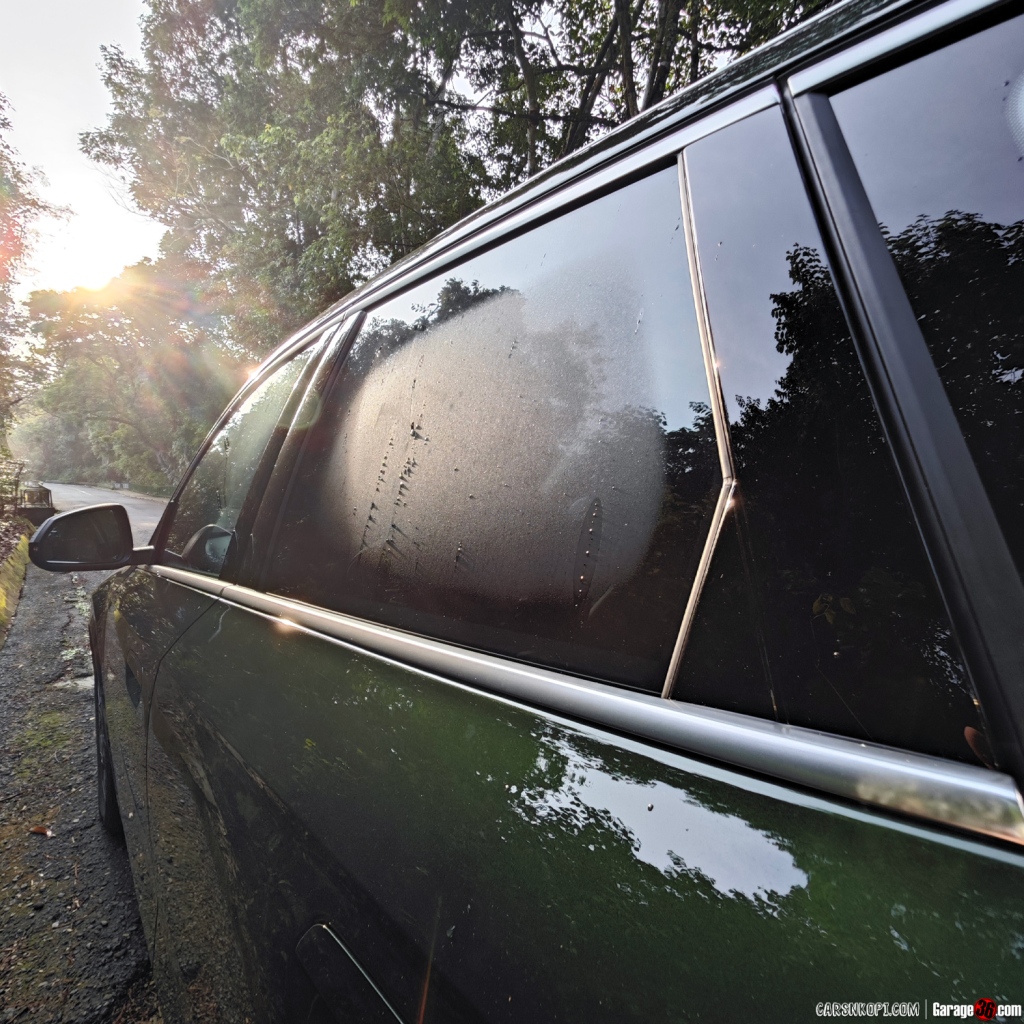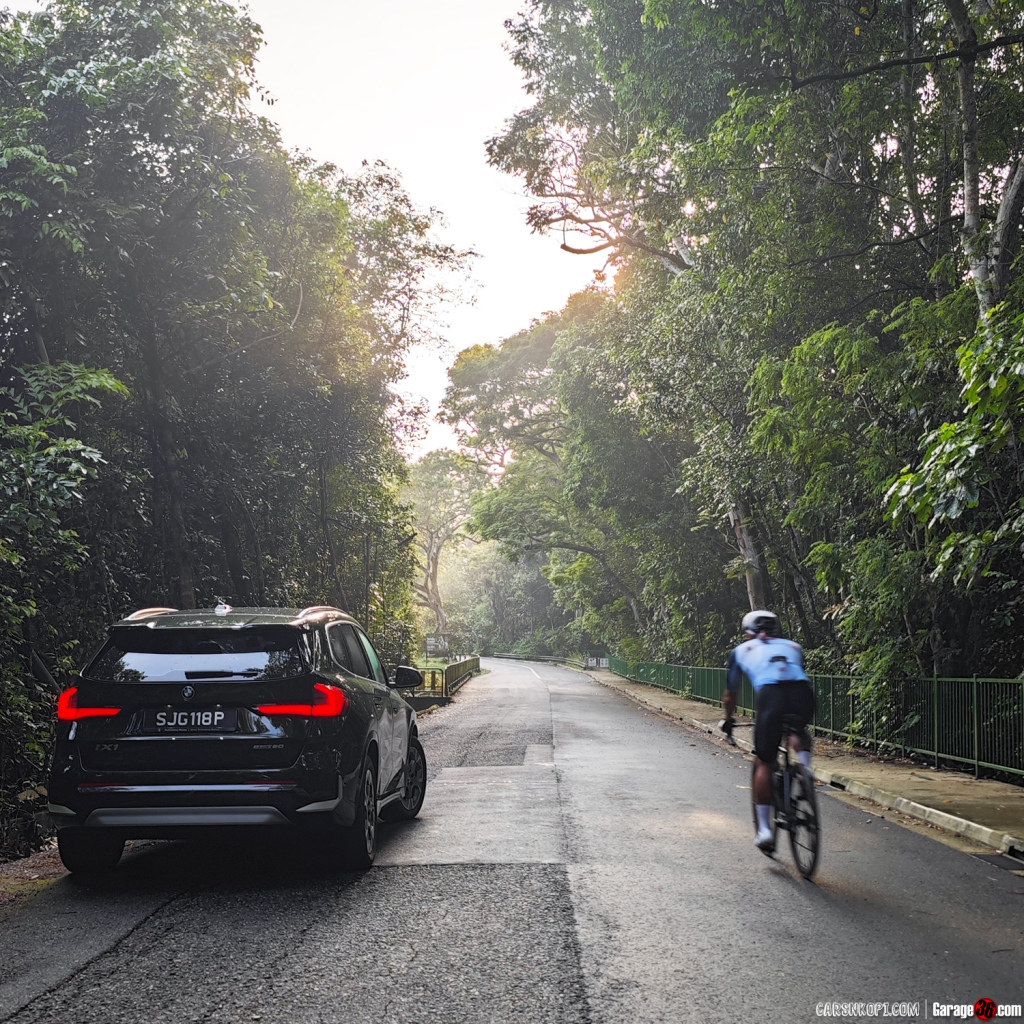We last drove the U11 X1 in its Category-A friendly iteration a little over a year ago and while the sDrive16’s premium build quality, handsomely rugged exterior design and dynamic handling left us with enough positive impressions to overlook its slightly harsh ride and counterintuitive infotainment UI, the one thing we couldn’t overlook was its powertrain that felt lacking and at times strained in a car that seemed very promising.
Fast forward a couple of months we found ourselves traversing the beautiful landscapes of Bavaria behind the wheel of the iX1 xDrive30. Packing two electric motors, one mounted on each axle. The iX1 xDrive30 packed a healthy 313 bhp and 494 Nm of torque. More than double the power from our local sDrive16i, allowing it to hit 100km/h in a more spirited 5.7 seconds. Needless to say, the xDrive30 was a revelation that fully showcased the potential of the X1/iX1 range.

Too busy to read everything? Here are the 5 key takeaways for the BMW U11 iX1
- While they might be as different as chalk and cheese, the BMW iX1 is the replacement for the German marque’s original EV, the i3.
- Not all eDrive20 models are created equal. While overseas market eDrive20 iX1s come with 204 horsepower, Singapore’s eDrive20 has to make do with just 148 horsepower to comply with our local market’s Category A COE classification. Although torque figures are similar across all eDrive20s at 250Nm, our local car’s lack of punch means a longer is required to touch 100km/h. 10.5 seconds against 8.6 seconds, an identical acceleration time as its 1.5-litre (also category A COE’ed) ICE-sibling, the sDrive16i.
- While the iX1 eDrive20’s power figures may appear underwhelming in the premium EV segment, its quiet and smooth drivetrain enables guilt-free utilization of the entire throttle pedal’s travel. This translates to making progress within town much quicker than raw figures might suggest. And yes, there’s a certain amount of pleasure derived from unleashing its full (albeit limited) potential at every opportunity.
- With its 64.8kWh Lithium-ion batteries on board, the iX1 carries a weight penalty of 290 kilos against the petrol-drive sDrive16i, as well as a S$20,000 premium. Riding on factory-fitted Hankook S1 Evo3 tires wrapped around 18-inch alloys, the iX1 offers an overall smooth ride, albeit with an underlying stiffness and initial harshness at lower speeds that gradually smoothens out once it hits the highway.
- At the time of writing, the U11 iX1 eDrive20 64.8kWh retails for S$266,888, which is S$20,000 more than the equivalent specced X1 sDrive16i (S$246,666). Its closest rival, the slightly more powerful (188hp) EQA250+, is a bit pricier at S$289,888. However, the extra power also incurs a slight road tax penalty of S$176 per year (S$1,736/year against S$1,560/year). Moving up half a step, there’s the EQB 250+, which comes in with an even heftier price tag of S$302,888.

Fast forward a few more months, and the iX1 has landed on our local shores. However, the iX1s bound for Singapore differ from the xDrive30 variety and don’t boast the same power output as their counterparts elsewhere. Let me introduce you to Singapore’s version of the iX1 eDrive20 64.8kWh, with its uniquely modest 148 horsepowers.
The rationale for this downsizing of electric juice is none other than our country’s unique COE system. However, one could argue, given current COE prices, the minimal difference between Category A and Category B COE prices makes this decision somewhat difficult to comprehend and on paper at least, does little to differentiate it from its ICE-powered sDrive16i stablemate. That being said, with keys in hand, let’s take a closer look (and drive) for ourselves.

Visually, there’s not much that distinguishes the iX1 from its petrol-powered counterpart, except for the blanked-off and stylized grille, which serves as the primary indicator that this SAV is solely battery-powered. However, this isn’t necessarily a negative aspect, as this generation of BMW’s smallest X-vehicle boasts a handsome appearance (especially so in our test car’s lovely shade of San Remo Green), characterized by squarish, chunky exterior surfaces and upright lines.


As of now, the xLine trim stands as the sole option, characterized by aluminium and aluminium-effect trim panels throughout, along with blocky-looking 18-inch wheels fitted with Hankook S1 Evo3 tires. For those who prefer the sportier M-Sport aesthetic, you might have to wait.

As we discovered previously with the X1 (and iX1 in Germany), the increase in external dimensions in this generation’s X1 has translated into more interior space for both passengers and cargo. With sliding and folding rear seats, the cargo space can be expanded to a total of 490 litres, slightly less than the 540 litres offered by the BMW X1. With the added interior room, everyone inside can now enjoy the iX1’s “veganized” interior, which also features BMW’s ubiquitous curved digital screen atop a clean and modern dashboard layout, a feature now showcased across their entire portfolio.


Also featured across BMW’s entire portfolio is their updated Operating System, seen in other cars in its 8.5 form and in the U11 in its slightly updated OS9 iteration. While both versions of the OS look virtually identical, OS9 has slightly different placements for certain grouping functionalities in the main menu. This update does bring about a slightly better experience in terms of usability, especially with the quick selection buttons moved from the centre console to the side of the screen.
However, the same gripes I’ve had with OS8.5 in the i5 and the 5-Series remain in OS9, with the designers seemingly prioritizing visual spectacle over functionalities, resulting in overly small touch target areas and an inability to customize the home-screen widgets. Interestingly, though, while I do miss having the iDrive rotary dial, OS9’s UI does seem to work better without having a separate controller.

On paper, there isn’t a great deal separating our iX1 eDrive20 from the X1 sDrive16i, certainly not what its S$20,000 premium might suggest. While the iX1 does outperform the X1 in terms of outright power (148hp against 121hp), its 290kg weight penalty means both baby SAVs reach 100km/h in an identical 10.5 seconds. However, the difference lies in the manner in which they both race to that century mark. While the X1’s 3-cylinder TwinPowered heart spins itself up to its 6,500rpm redline through a 7-speed DCT, the iX1 time-after-time delivers speed in a smooth and unfussed manner.
Thanks to its electric drivetrain, the iX1 accelerates seamlessly without gear changes, providing a tranquil and effortless driving experience. This smoothness makes repeated full-throttle acceleration runs in the iX1 feel almost guilt-free, highlighting the unique advantages of electric propulsion. As one might expect, its electric drivetrain allows for rather nippy progress in town, with 210Nm of torque instantly available on demand.

On the xLine’s 18-inch wheels and passive suspension, the iX1’s ride quality is fairly decent. While it does exhibit a “sportier” damper setup with an underlying stiffness in the ride quality, the initial harshness at lower speeds gradually fades as it gains momentum. While the ride isn’t as smooth as that of its larger siblings, it certainly feels better calibrated and more sophisticated than the setup in the sDrive16.
The “sportier” driving quality becomes apparent when navigating bends in the iX1. It maintains a very neutral and controlled balance, even with the front wheels managing both propulsion and directional duties. While its modest 148 electric horses might not set the hearts of keen drivers on fire, there’s an undeniable thrill in having unfettered access to the full travel of the throttle pedal.
Sadly missing, however, is the iconic Hans Zimmer sound set found on every other i-car in the BMW portfolio (and even on the iX1s we tested in Germany). Without this added aural stimulation, keen drivers may find the driving experience slightly less thrilling, making its omission a rather strange decision.

BMW claims a total range of 474 kilometers on a full charge, depending on driving style, of course. When cruising around town, a more accurate estimate is around 450 kilometers. If we add a bit of spirited driving, this figure drops to about 420 kilometers. While not as impressive as 474, I reckon it’s more than enough for a week of commuting on a single charge.

As of now, the U11 iX1 eDrive20 64.8kWh is priced at S$266,888, which is S$20,000 more than the equivalent X1 sDrive16i at S$246,666. Its closest competitor, the slightly more powerful (188hp) EQA250+, comes in with a slightly higher price tag of S$289,888. However, the extra power also means a slight road tax penalty of S$176 per year (S$1,736/year against S$1,560/year). Stepping up half a step, there’s the EQB 250+ with an even heftier price tag of S$302,888.
Thus, while the iX1 eDrive20 may appear closely matched with its Category-A’d sDrive16i counterpart on paper, the real difference lies in the driving experience. The smoothness of its electric drivetrain and the serene driving sensation it offers set it apart from the traditional petrol-powered X1.
However, this distinction comes at a cost—a significant S$20,000 premium for the electric variant, not to mention a higher road tax. For some buyers, the allure of futuristic electric propulsion and its associated benefits in efficiency and perceived environmental friendliness may justify this added expense. Yet, for others, the traditional thrill of petrol power may still hold sway, especially at a financial cost.
Ultimately, the choice between the iX1 eDrive20 and the X1 sDrive16i boils down to personal preferences and priorities. Whether you prioritize the innovative technology and quiet efficiency of electric propulsion or the visceral experience of a petrol engine, each option offers its own appeal. In this dynamic landscape of automotive choices, understanding your driving needs and desires is paramount in making the right decision.
 BMW.SG | BMW Singapore Owners Community The Ultimate BMW Community – Established Since 2001
BMW.SG | BMW Singapore Owners Community The Ultimate BMW Community – Established Since 2001













